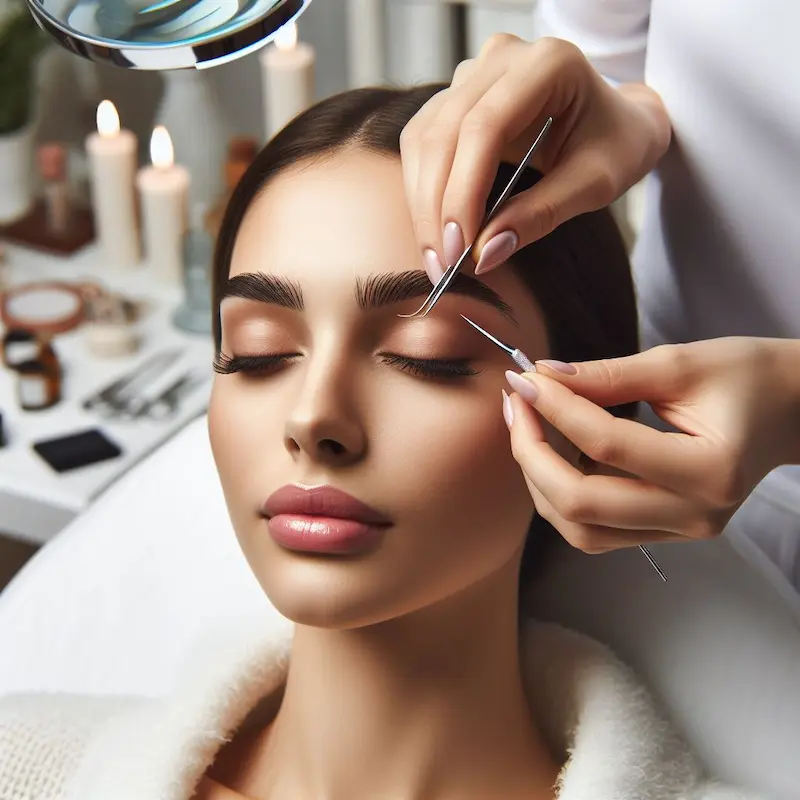Brow threading is an ancient hair removal technique with roots tracing back to Eastern cultures. It involves using a thin cotton or polyester thread to remove unwanted eyebrow hairs with precision, offering a cleaner and more defined shape compared to other methods. In recent years, threading has gained popularity worldwide for its efficacy and minimal skin irritation. This blog post delves into the art of brow threading, providing techniques and tips to achieve flawless results.
Understanding Brow Threading
Brow threading is not just a beauty procedure; it’s an art form that requires skill, patience, and practice. The technique uses a twisted thread to catch and pull out hair from the follicle. Unlike waxing, threading is more precise, allowing for the removal of individual hairs and creating sharper eyebrow lines.
Getting Started: The Basics
- Preparation: Before threading, ensure the skin is clean and free of oils or makeup. Some prefer to apply a light dusting of talcum powder to absorb any excess moisture.
- The Thread: Use a high-quality cotton or polyester thread, about 24 inches in length. Tie the ends together to form a loop.
- The Technique: Hold the thread with both hands, twisting it in the middle about 10 times to create a series of twists. This twisted section is what grabs the hairs.
The Threading Process
- Positioning: With the looped thread, practice opening and closing the twisted section by spreading apart the fingers of one hand while closing the fingers of the other. This motion moves the twisted part along the thread.
- Application: Place the twisted section against the unwanted hair. Align the thread so that when you close one hand and open the other, the twist pulls in the direction of hair growth, catching and removing the hairs.
- Shaping: Start at the bottom of the brow and work your way up, threading in lines to maintain symmetry. Always thread in the direction of hair growth to minimize breakage and irritation.
Tips for Flawless Brows
- Know Your Shape: Understand your natural brow shape and where you need to fill in or reduce volume. Use a brow pencil to outline your desired shape before threading.
- Practice Makes Perfect: Threading requires coordination and practice. Start slowly and practice on your leg or arm hair before moving on to your brows.
- Aftercare: Apply a soothing aloe vera gel or tea tree oil post-threading to reduce redness and prevent irritation.
- Maintenance: Regular threading sessions, typically every 3-4 weeks, can help maintain the shape and prevent overgrowth.
Conclusion (The Art of Brow Threading)
Brow threading is a meticulous art that can transform your facial features by giving you well-defined, clean eyebrows. While it may seem daunting at first, with the right technique and practice, anyone can master this ancient beauty ritual. Remember, the key to perfect brows is not just the removal process but understanding the natural shape and how to enhance it. With these techniques and tips, you’re well on your way to achieving flawless, beautiful brows that complement your natural beauty.

